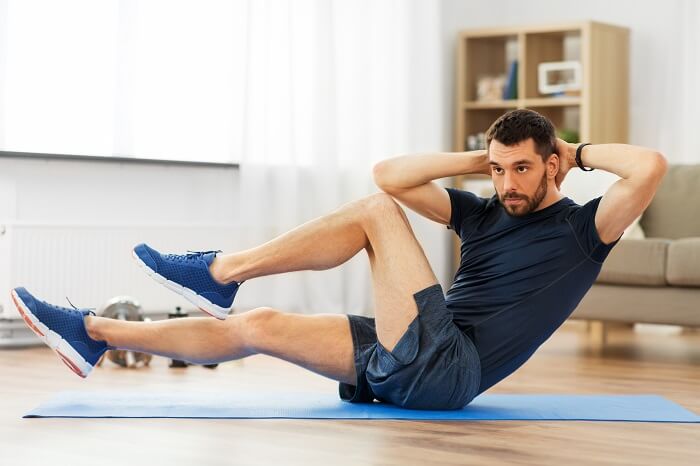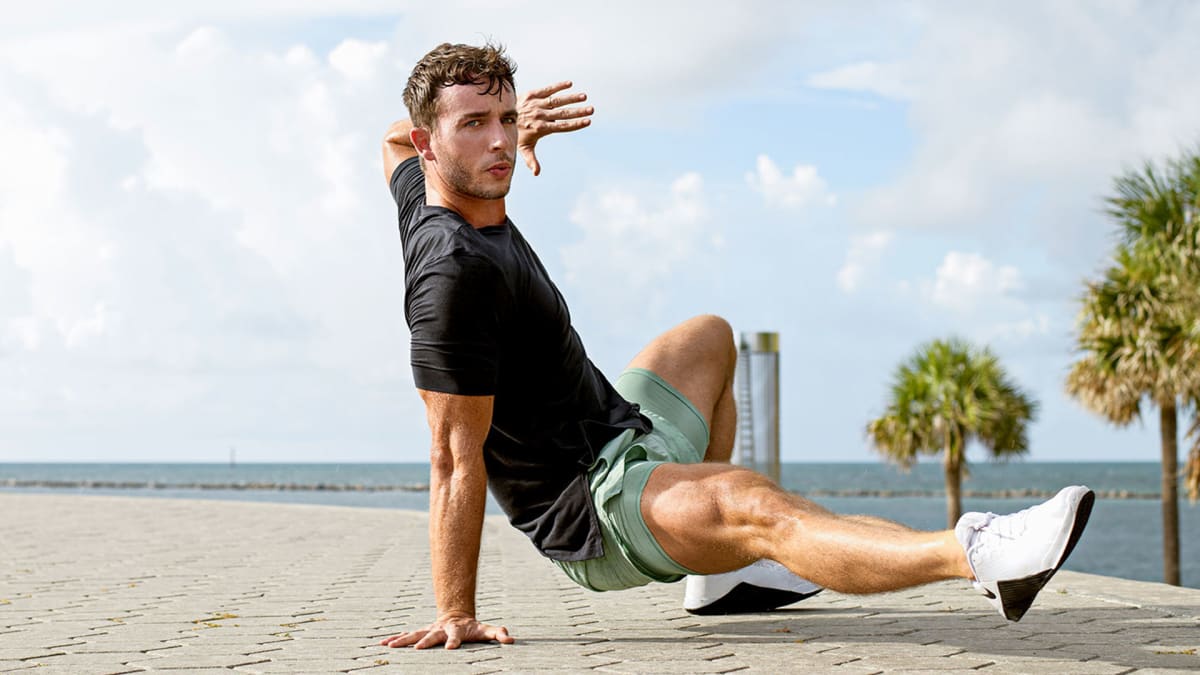Exercise

Why is exercise so important for seniors?
Whether you were once much more physically active or have never been one to exercise regularly, now is a great
time to start an exercise and fitness regimen. Getting and staying in shape is just as important for seniors as
it is for younger people.
Why is exercise important for older people? Getting your heart rate up and challenging your muscles benefits
virtually every system in your body and improves your physical and mental health in myriad ways. Physical
activity helps maintain a healthy blood pressure, keeps harmful plaque from building up in your arteries,
reduces inflammation, improves blood sugar levels, strengthens bones, and helps stave off depression. In
addition, a regular exercise program can make your sex life better, lead to better quality sleep, reduce your
risk of some cancers, and is linked to longer life.
Many older adults hesitate to get moving because they’re unfamiliar with the types of exercise and fitness that
are effective and safe, and aren’t sure how much exercise they need to do. The good news is that any kind of
movement is better than being sedentary, so there’s nothing wrong with starting small and working your way up to
longer workouts. Your goal should be no less than 150 minutes of moderate intensity activity per week, but if
you can’t start at that level, work up to it (and then past it). While there are many dedicated forms of
exercise and fitness for adults, you also want to stay physically active throughout the day by taking the
stairs, doing yard work, and playing with your grandkids.
When it comes to exercise and fitness for seniors, most can begin without consulting a doctor—but there are
exceptions. If you have a major health condition like diabetes, high blood pressure, heart or lung disease,
osteoprosis or a neurological disease, definitely talk to your doctor first. People with mobility issues such as
poor balance or arthritis should also get advice from their doctor.
What are the best types of exercise?

While there are endless forms of exercise, experts categorize physical activity into four broad types based on
what each calls upon your body to do and how the movement benefits you.
Aerobic exercise is marked by an increased heart rate. Although most aerobic exercises require you to move your
whole body, the main focus is on your heart and lungs (Aerobic exercise is often called “cardio” because it
challenges and benefits your cardiovascular system). Activities like walking, swimming, dancing and cycling, if
done at sufficient intensity, get you breathing faster and your heart working harder. Aerobic exercises burn
fat, improve your mood, reduce inflammation and lower blood sugar.
Strength training, sometimes called resistance training, should be performed two to three times a week. Squats,
lunges, push-ups and the exercises performed on resistance machines or using weights or bands help maintain and
even build muscle mass and strength. Strength training also helps prevent falls, keep bones strong, lower blood
sugar levels, and improve balance. Do a combination of both isometric and isotonic exercises. Isometric
exercises, such as doing planks and holding leg lifts, are done without movement. They are great for maintaining
strength and improving stability. Isotonic exercises require you to bear weight throughout a range of motion.
Bicep curls, bench presses and sit-ups are all forms of isotonic exercise.
Stretching exercises keep your muscles and tendons flexible, preserve your posture, and improve mobility,
especially as you age. Stretching can be done every day.
Balance exercises call on the various systems that help you stay upright and oriented, such as those of the
inner ear, vision and muscles and joints. Tai chi and yoga are great forms of balance exercises that can help
you avoid falls and stay independent well into your senior years.
How much exercise do I need?

How much exercise you should be getting depends on several factors, including your current level of fitness,
your fitness goals, the types of exercise you’re planning to do, and whether you have deficits in such areas as
strength, flexibility or balance.
As a general rule, 150 minutes of moderate intensity aerobic activity (or 75 minutes of vigorous exercise) is
recommended as a weekly minimum. As you become more fit, you’ll want to exceed that in order to reap maximum
benefit. A natural way of splitting up the 150 minutes might be to do a 30-minute session five times per week,
or you can break it up and do two 15-minute sessions during a single day. Adopt whatever schedule fits your
lifestyle.
For strength exercises, aim to work all your major muscle groups twice to three times each week, leaving 48
hours between each workout for recovery. If you do “total-body” workouts, that’s two sessions per week. If you
choose to split your workouts to target a specific muscle group (e., “leg day”), that will require more
frequent workouts. Just make sure you’re leaving 48 hours of rest before you re-work a major muscle.
If you have noticed problems with your balance, such as unsteadiness, dizziness, or vertigo, talk to a
healthcare provider for recommendations about balance-specific exercises. Get in three half-hour workouts each
week in addition to a 30-minute walk at least twice weekly.
It’s best to stretch after you have warmed up for a few minutes, or perform stretching exercises after you
completed your workout. When stretching each muscle group, take it slow and steady, release, repeat again.
But how much exercise is too much? You should expect a little muscle soreness after workouts, especially in the
beginning. But if you find that your body is simply not recovering between workouts, you may be overtraining.
Remember that seniors need more recovery time than younger people. With the exception of “welcome” muscle
soreness, an exercise program should make you feel good. If it doesn’t, you’re probably overdoing it. That
doesn’t mean you should quit, only that you should dial back the intensity or frequency of your workouts until
you hit the “sweet spot” in which you’ve “tired out” your body but then recovered enough to tackle your next
session with enthusiasm.
What are the benefits of exercise?
A smartly designed exercise program will benefit your body and mind in innumerable ways.
The benefits of exercise on mental health are well documented. For example, one major study found that sedentary
people are 44% more likely to be depressed. Another found that those with mild to moderate depression could get
similar results to those obtained through antidepressants just by exercising for 90 minutes each week. The key
appears to be the release of brain chemicals such as serotonin and dopamine, which help lift mood and combat
stress.
We’re all familiar with exercise’s ability to improve cardiovascular health. But how does exercise lower blood
pressure? Interestingly, when you stimulate your circulatory system through aerobic exercise, you’re temporarily
increasing your blood pressure by forcing the system to work harder—but when you’ve finished exercising, your
blood pressure drops to a lower level than it was before you began.
Many people think of exercise as an integral part of weight loss—and, although diet is also extremely important,
they’re not wrong. But what exercise burns the most calories? Generally, aerobic exercises (cardio) are great
for expending calories and reducing fat. But don’t overlook the effectiveness of strength training, which
optimizes your body’s ratio of lean muscle to fat (It’s also the best exercise for bone strength). There’s no
Holy Grail when it comes to a single best weight-loss exercise. The best exercise to lose weight is the one
you’ll do consistently. Whatever gets your heart rate up and gets your body moving—while having fun and staying
motivated—is the exercise that will help you shed pounds.
Learn more about the benefits of exercise and how it can positively impact your life.